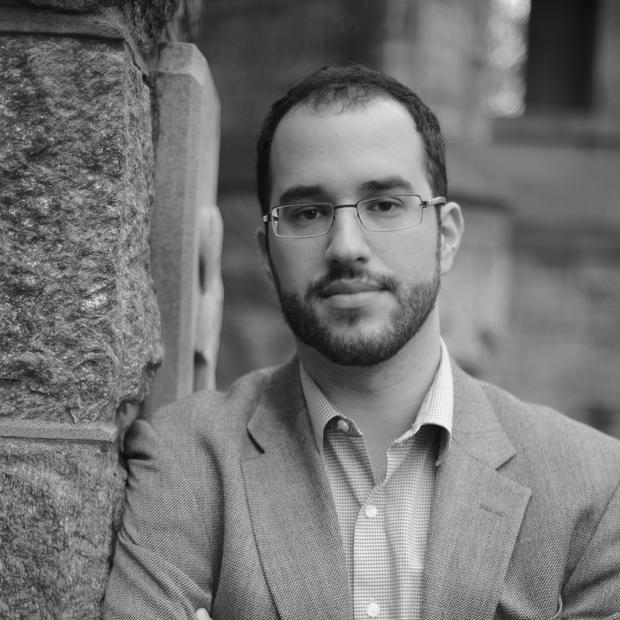These strong denunciations are part of a national debate about the role of prosecutors. After decades of tough-on-crime policies that have given the United States routine police violence and the world’s largest prison population, reformist candidates in cities around the country have been swept into office on bold promises of change.
Check out our 2021 voter guide, where both candidates have answered your questions about property crime, SPOG and more.
While these positions resonate with pluralities of voters, a vocal and well-funded opposition led by police unions, GOP megadonors and Democratic Party insiders persists. Raising a well-worn appeal for “law and order,” these conservative critics allege that disrupting the status quo produces crime. The evidence tells a different story.
As a scholar studying the history of mass incarceration and prison abolition, I have followed these races with great interest. For generations, the district attorney office has been a steppingstone. The office has played a fundamental role in local politics, while individuals within it have often used the job as a springboard to higher office. Local district attorneys have both shaped and responded to tough-on-crime policies, riding to office on waves of fear of crime and pursuing tougher punishments once there.
The strategy to elect progressive prosecutors is different. It takes as its constituency popular outrage at police violence, harsh criminal sentences and other forms of injustice. This outrage, it should be noted, has come from people who are themselves often survivors of crime and violence, and speak from experience about their frustrations with the status quo. And those who have pursued elected office seem genuinely interested in the job itself.
Much as conservative prosecutors have done for generations, these reform candidates recognize the enormous power of the office and have moved to transform it. Though each one of these candidates has been shaped by protests against the criminal legal system they desire to work within, the progressive reformers have channeled that energy into making the existing system more humane and reducing the reliance on punishment as a response to social problems. Claims of impending lawlessness notwithstanding, the attempt to elect reformers to these roles can be seen as a measure of homespun optimism. People have enough faith in their ideas, their neighbors and their cities to seek government office. They are trying to change the system from within.
Read another perspective: Seattle’s city attorney race and the problem of repeat offenders
In all of these cases, the critics of tough-on-crime policies have vied to become district attorney of major metropolitan areas. Many of them, like Thomas-Kennedy, are former public defenders who have seen the system on the other side, an experience that informs their views on eliminating cash bail, fighting white-collar crime and pursuing nonpunitive responses to certain offenses, among other issues.
If elected, Thomas-Kennedy would be the first to apply this “progressive prosecutor” strategy to a city attorney’s office rather than the district attorney — an important distinction. The district attorney, called the prosecuting attorney in King County, is responsible for felony charges. That position has been occupied by Dan Satterberg since 2007. The city attorney, meanwhile, has a different purview. In addition to representing the city and advising city officials, the office prosecutes traffic infractions and misdemeanors, minor offenses typically punishable with less than a year of incarceration.
Despite the different roles of the positions, what progressive district attorneys have faced elsewhere provides a road map for what we might see if Seattle elects an abolitionist as its city attorney.
Since coming into office, these reformers have faced a blistering series of attacks that have often played fast and loose with the facts. Conservative critics charge that St. Louis prosecutor Kim Gardner “essentially abandoned” prosecution. The Philadelphia Fraternal Order of Police branded reformist prosecutor Larry Krasner as “soft on crime, soft on sentencing.” In Cook County, Illinois, progressive district attorney Kim Foxx faced a challenger who blamed her for not pursuing high bail and charging more offenses as felonies. (Both Krasner and Foxx handily won reelection despite these criticisms.)
One of the most high profile progressive district attorneys, Chesa Boudin of San Francisco, elected in 2019, now faces a recall effort. Backed by Republican megadonors and Silicon Valley investors, recall proponents have claimed that Boudin has “suspended” the criminal justice system altogether. In fact, prosecutions continue in San Francisco. But that’s not all. Boudin has also expanded diversion and other nonpunitive alternatives to incarceration, including for primary caregivers — showing that the office can be used for more than prosecution.
In March, the San Francisco Chronicle reported that murder and other violent crime in San Francisco “remains at historic lows, with overall crime down 30% since last year.” Yet misdemeanors, such as car break-ins and retail theft, have increased. Critics see this as proof that leniency generates crime. However, many criminal offenses — including gun violence, which has declined in San Francisco — have risen across the country, no matter the politics of the prosecuting attorney. Of the national rise in gun violence, legal scholar John Pfaff writes that “the rise in homicides has occurred more or less equally in places that adopted [criminal justice reforms] and those that rejected them. And given how few places have significantly altered their approach to crime, the homicide spike by and large took place on the status quo’s watch.”
It is not just serious offenses. Defenders of the tough-on-crime status quo point to low-level misdemeanors — often the kind of quality-of-life issues (like theft) that one might reasonably expect to rise in a time of such instability — as cause for alarm.
Given that misdemeanor prosecutions are a key part of the city attorney’s purview, as well as Seattle’s penchant for following San Francisco, it won’t be surprising to see opponents of Thomas-Kennedy’s agenda highlight misdemeanors to argue against transforming the legal system and in favor of greater punishment, both during the general election and, if she wins, throughout her tenure.
Indeed, that approach was already evident in the primary and has only increased as we head into the general election.
Like Thomas-Kennedy, Davison ran as a protest candidate against the status quo, embodied in the current city attorney, Pete Holmes. Davison’s was a conservative protest, seeing Holmes’ office as too lenient. During the primary campaign, she said, “We must address crimes at the misdemeanor level because otherwise it invites an increase in severity and frequency.”
Here, Davison makes the slippery-slope argument that has been a hallmark of tough-on-crime policies. The idea is most commonly understood as “broken windows policing,” after a 1982 article by political scientists George L. Kelling and James Q. Wilson that argued the road to lawlessness is paved with simple offenses. A single broken window, in other words, could lead to other crimes that fuel neighborhood collapse. Kelling and Wilson, together with police chiefs like Bill Bratton, are widely credited with launching a series of harsh measures focused on policing and prosecuting small offenses — retail theft, drug possession, sex work, homelessness.
Low-level offenses like these have been a driving focus of so-called “quality of life” policing, which has been a handmaiden to mass incarceration. In no small way, getting tough on misdemeanors helped fuel the country’s rapid expansion of jails and prisons.
Mass incarceration is many things. Long-term sentences in prison is one distinguishing feature. But equally significant is the churn of people throughout city and county jails. Unlike prisons, jails hold people convicted of small offenses, typically those sentenced to less than a year, and people who have not been convicted of a crime. Jails are the province of misdemeanors. More than 10 million Americans — an almost incomprehensible number — find themselves inside a jail cell in a given year. Compared with prisons, jails have higher rates of suicide, untreated mental health crisis and reports of abuse.
The majority of people in jail have not yet stood trial, which means that they are technically innocent, and misdemeanor arrests far outweigh convictions. Even when it doesn’t lead to a conviction, the process can be devastating. As scholar Issa Kohler-Hausmann shows in her award-winning book, Misdemeanorland, encounters with the criminal legal system can cost people their jobs and subject them to excessive fees, fines and surveillance. Even short stays in jail cause serious physical or mental health distress. Jails also effectively engage in voter suppression by disrupting traditional access to the ballot and not providing alternatives for people who are, by and large, eligible voters.
Attention to these injustices and their failure to solve social problems has resulted in plummeting support for punitive policies. It has cleared the way for progressives — even abolitionists — to occupy government office. The recognition that punishment fails to provide for people’s needs has upended local politics as surely as decades of mass incarceration have done.
Yet as transformative prosecutors have discovered, it’s easier to for them to extend carceral power than diminish it. Neither a prosecutor nor a city attorney can provide housing, jobs, health care, child care or stable wages — the types of basic human needs that, when fulfilled, create conditions that, studies show, decrease harm and predatory behavior.
Talk of “rising crime” fills the gap created by a lack of social infrastructure. As sociologist Tamara Nopper explained, crime is a fungible category; it is recorded and reported differently by different agencies. It is a law enforcement metric, not a community-generated one. Attention to crime — by media, politicians or political movements — often bears little resemblance to the actual experience of crime. Crime rates fluctuated in the 1980s and 1990s, while arrests, prosecutions and convictions skyrocketed. We have seen a similar dynamic in recent years, where the GOP has continued to push a message of “law and order,” despite record low crime rates. Or, as CNN editor Priya Krishnakumar recently put it, “crime stats lie.”
Discussions of crime evoke strong feelings. They should also spark consideration of the evidence. No less than abolition, “rising crime” is a story. It is a story about the society we live in, the one we want to live in and how to get from here to there. With Davison and Thomas-Kennedy on the ballot, Seattle voters will have to choose between sharply contrasting visions of what our city should look like.



